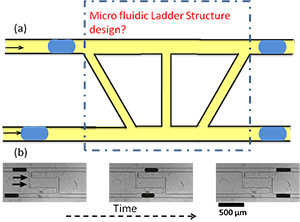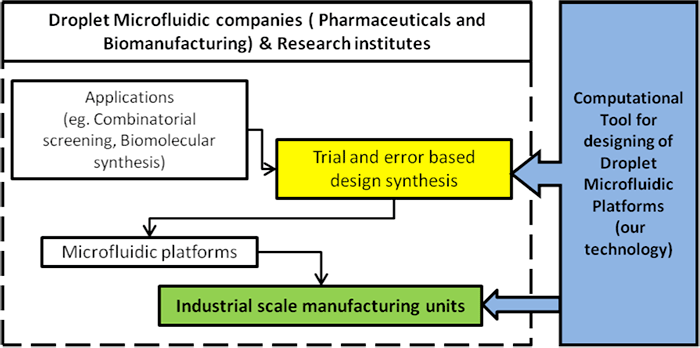Chemical Engineering Student Receives $225,000 NSF STTR Grant to Design Software for Droplet-Based Microfluidic Devices

Jeevan Maddala, a Texas Tech student graduating with a Doctor of Philosophy in chemical engineering in August, was recently awarded a $225,000 National Science Foundation Small Business Technology Transfer (NSF STTR) grant to help commercialize his doctoral work. The project, titled "Development of a Computational Tool for Modeling, Simulation, and Design of Next Generation Discrete Droplet Microfluidic Systems," is a collaboration with Raghunathan Rengasamy, a professor of chemical engineering at Texas Tech.
Maddala came to Texas Tech in the fall of 2009 with the hopes of developing new technology and commercializing it through a startup company. Working with Rengasamy and Siva Vanapalli, an assistant professor of chemical engineering, he developed an interest in microfluidic devices — tiny plumbing systems with "pipes" that are the size of human hairs. These tiny pipes are often used to transport fluids at very high speeds, allowing scientists to speed up the drug discovery process by processing large amounts of chemicals.

Currently, microfluidic devices are manufactured in prolonged trial and error processes, with many physical mockups. The painstaking process of development can create small custom devices for specific needs, but the application of these devices is limited. Building on his experiences in his research, Maddala had an idea to create software that would allow him to design microfluidic devices on the computer. In this way, he could fine-tune the properties and functionality of a device easily, addressing the specifications of a scientist or a particular need virtually. By building the devices on the computer, he could develop very complex and large devices and then manufacture them with a tool, like a three-dimensional printer. Maddala's software idea would help in the research and development of microfluidic devices for industry and research institutes, bridging the gap between the end product and the design process.
Soon, Maddala developed a set of algorithms that would allow him to build the software tool. These algorithms virtually create hundreds of microfluidic device designs that meet the specifications of the user. Each of the designs are analyzed and modified by the algorithms, resulting in thousands of design possibilities. Then, using efficiency measures and other criteria, the possibilities are narrowed down to only a few that will offer the best results. This process, using a relatively short amount of time, allows Maddala's algorithms to consider thousands of options and select the best designs — something that would take years using traditional methods.
When he converted the algorithms into a software prototype and began designing simple devices, the tests showed great promise for the technology. Maddala then knew it was time to seek funding for this technology from outside sources.
"Texas Tech provided me with the right environment to pursue my dreams," Maddala said. "My background in engineering helped me prepare the technical part of the proposal for the National Science Foundation; the challenge was in writing the business plan." He approached the Texas Tech Office of Technology Commercialization (OTC) and the Texas Tech University Small Business Development Center for help. Through the OTC, Maddala and Rengasamy were able to file a patent for his technology. "These two offices provided key resources that helped me get this grant," Maddala said.
"We need more graduate students, like Jeevan, to have an entrepreneurial mindset and to focus their research on solving real world problems," said Ryan Reber, a technology licensing specialist in the OTC. "The end goal is to actually transfer this innovation to the market. We are still a long way from doing that, but by filing for a patent and beginning to develop a business plan with Jeevan's team and the Small Business Development Center, our office has taken steps to expedite the commercialization process."
The NSF grant will allow him to focus for the next year on the development and demonstration of a software system. His system will allow a user to specify parameters on the virtual microfluidic device and prepare a device for fabrication. If successful, Maddala will move forward with further enhancements to the software system and the development of prototypes. He hopes to eventually build a fully-automated system that will design and physically construct highly complex droplet-based microfluidic platforms, starting from just a design concept of a user.
These new complex devices could eventually lead to the discovery of materials for pharmaceutical and biomedical applications, including protein crystallization, stem cell growth, and drug screening. Additionally, these devices could be designed for biological applications, such as the separation of cancer cells from healthy cells.

Edward E. Whitacre Jr. College of Engineering
-
Address
100 Engineering Center Box 43103 Lubbock, Texas 79409-3103 -
Phone
806.742.3451 -
Email
webmaster.coe@ttu.edu
